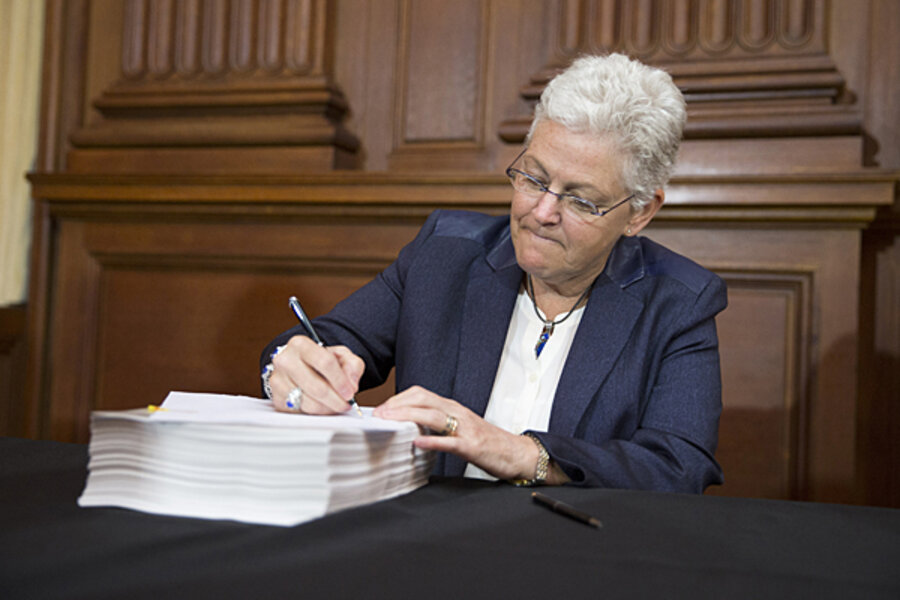With EPA's tough new standards, a carbon tax may be more plausible
Loading...
EPA’s proposed tough new standards for power-plant emissions of greenhouse gasses opens the door to new state or regional cap-and-trade systems to limit carbon discharges. It is less clear whether it would go the next step and permit states to impose their own carbon tax.
The proposed EPA rules, which Brookings senior fellow Barry Rabe describes as 'climate federalism,' seem to acknowledge the demise—at least for now—of a single federal solution to the climate problem. Instead, it grants states broad, but not unlimited, authority to come up with their own ways to reduce emissions.
Such a state-based approach recognizes reality: States and cities are already moving on their own in the absence of federal legislation. Operators of power plants may be more willing to work with their states than with the feds. And there simply is no possibility that Congress will enact any climate change measures in the current political environment.
The proposed regs, which still must go through what surely will be a contentious comment period, will require power plants to cut 2005-level carbon-dioxide emissions by as much as 30 percent by 2030. States would have to meet those explicit targets but have the flexibility to determine how facilities get there.
They could use more efficient technologies to produce electricity, shift to fuels that produce less CO2, invest in renewable energy such as wind or solar, or join a cap-and-trade system. New England already operates an interstate model and California has developed its own version.
The EPA proposal opens the door to an expansion of state or regionally-based cap-and-trade. But nowhere in the 645-page proposal is the dreaded “t” word uttered. A carbon tax is not excluded. It is simply not mentioned. That’s too bad.
If you’re interested in learning more about carbon taxes, here are some good resources: In a TaxVox blog in April, Adele Morris, policy director of climate and energy economics at Brookings, described how a state-based carbon tax might work. And for more detail on state-based market approaches, take a look at this paper by Adele and four co-authors from Stanford.
As my Tax Policy Center colleagues Donald Marron and Eric Toder discuss in a new paper for the American Economic Review, designing a workable carbon tax is not simple, and requires a number of difficult policy choices. And last year, Donald and Eric looked at how a carbon tax could be used to finance a cut in the corporate tax.
EPA is trying to marry tough, explicit goals for reducing emissions with a framework that gives states broad flexibility to get there. As the proposal grinds through the regulatory process, we’ll see whether a state-based carbon tax ends up in the mix.







